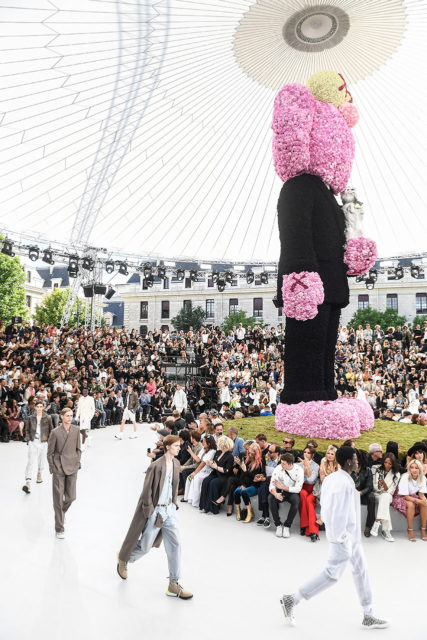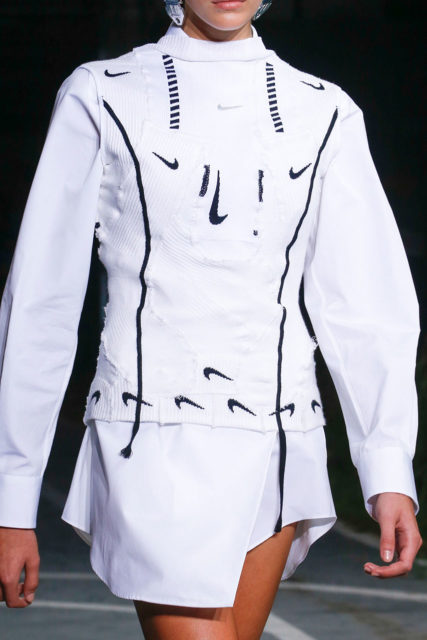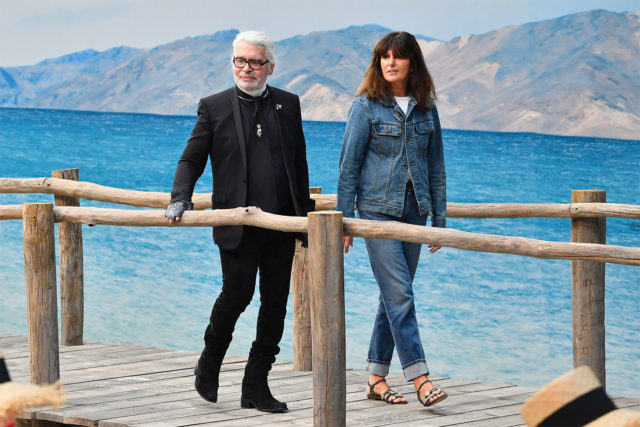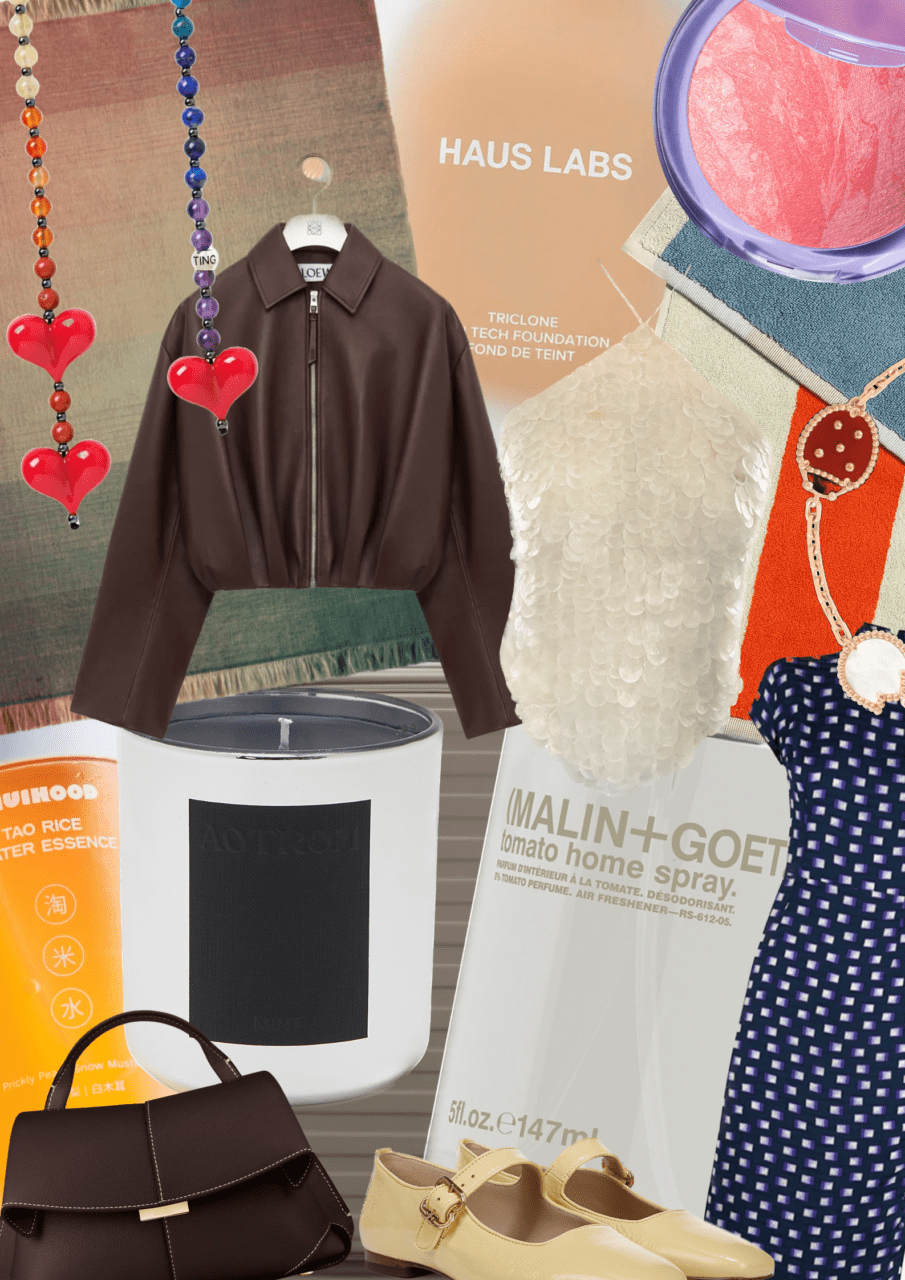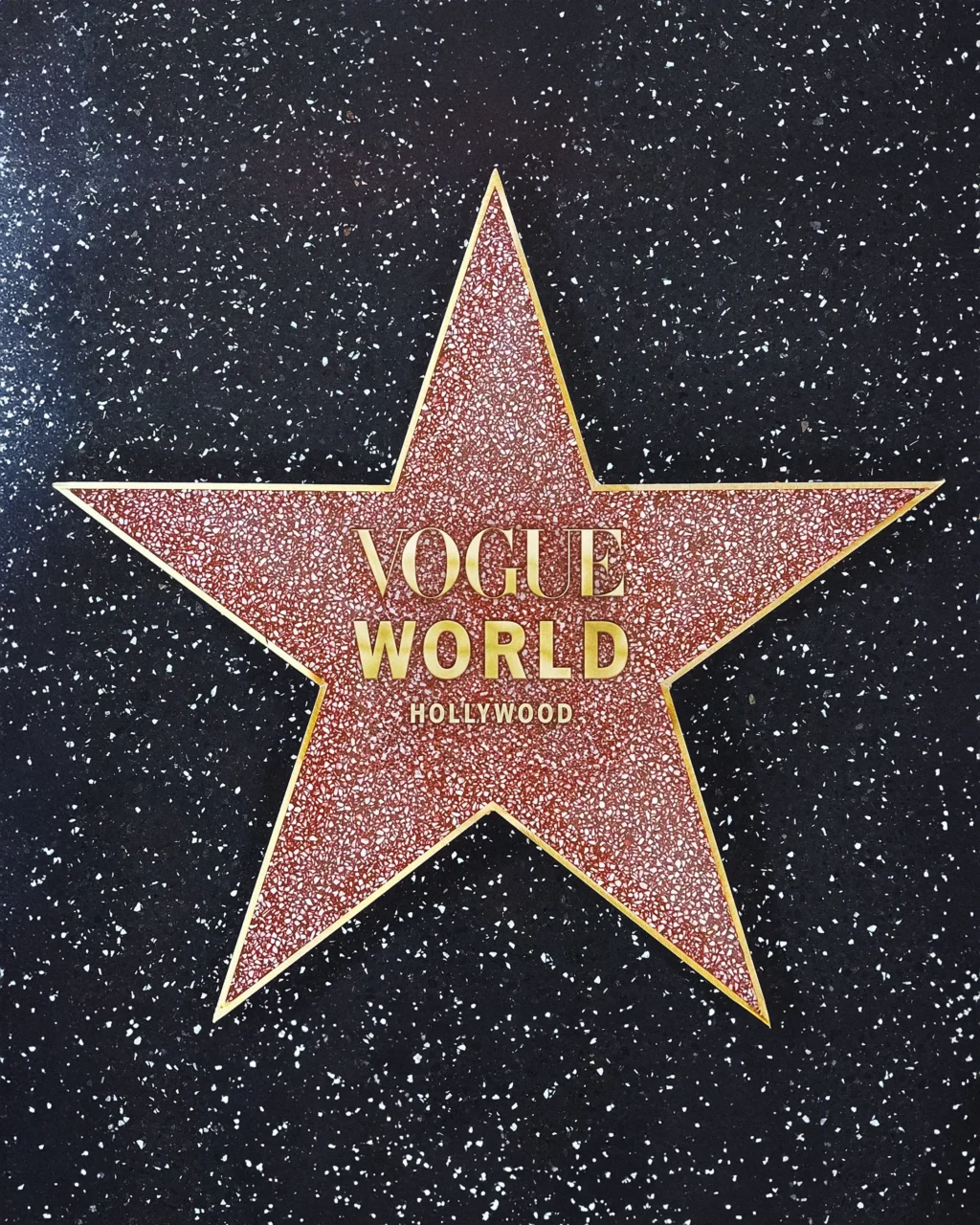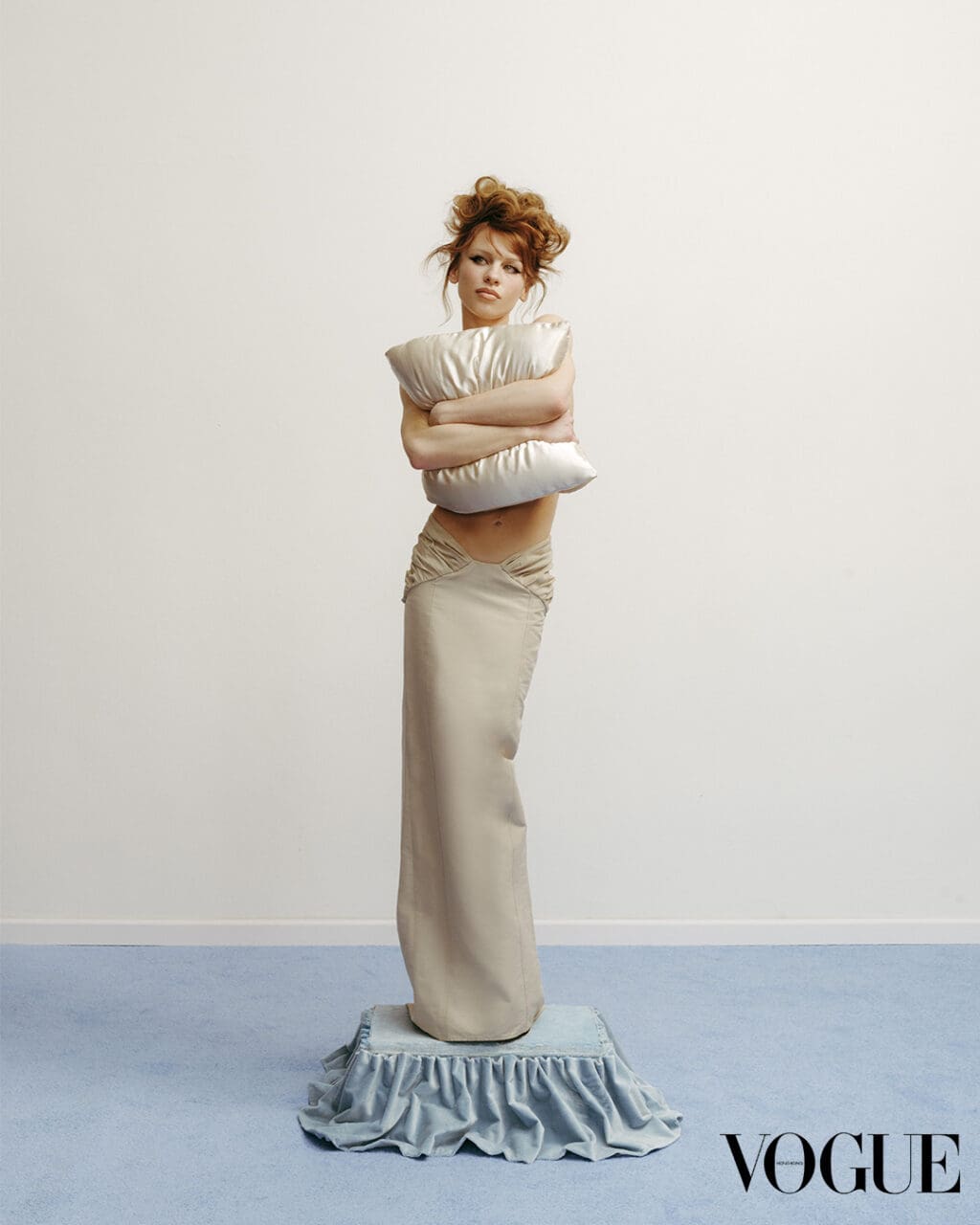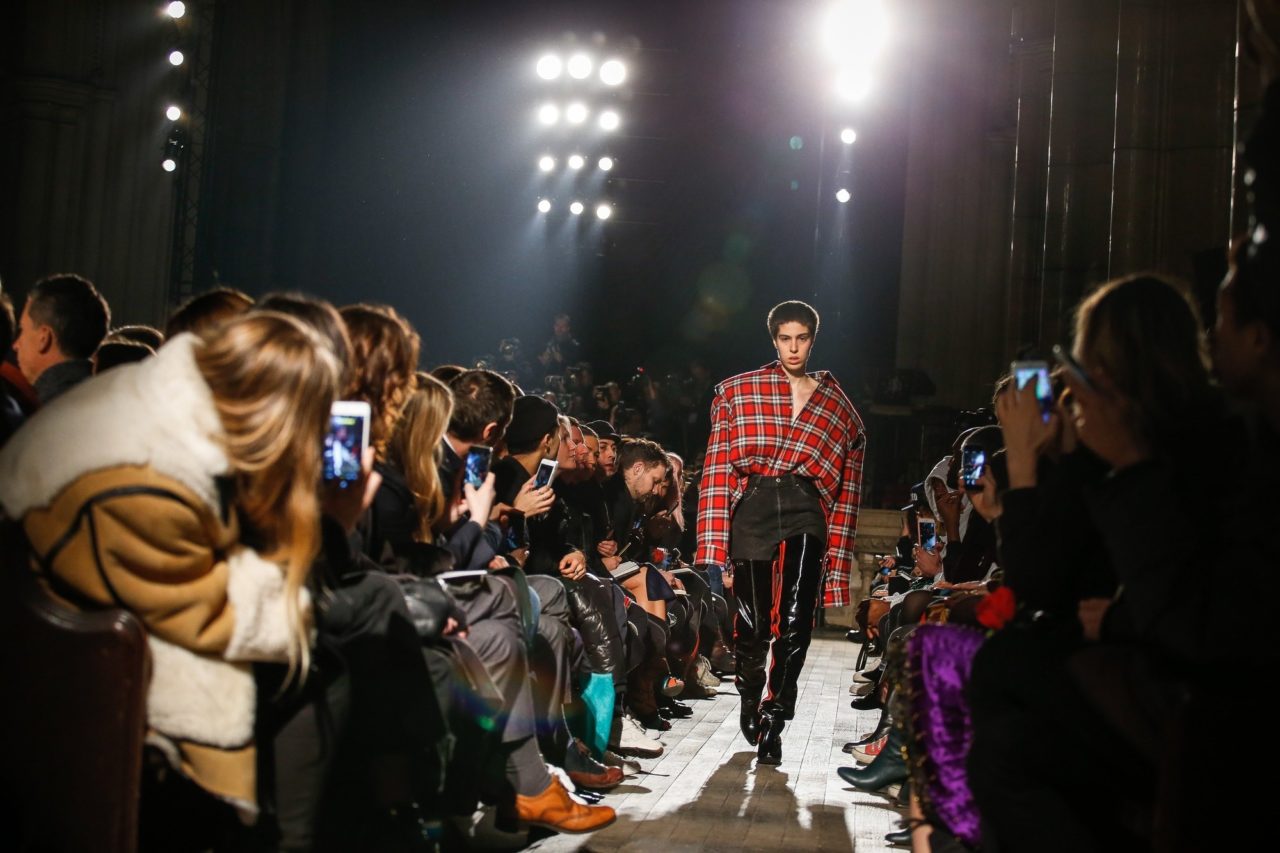
Someone recently said to me that he doesn’t “believe there is such a thing as luxury anymore.” Two years earlier, another declared he was “not interested in trends.” These are bold statements, and completely disarming when you realise they come from two people at the absolute pinnacle: heads of luxury fashion houses nonpareil. Standup, Jonathan Anderson, of the 172-year-old Spanish house of Loewe, for uttering the former, and same to you, Demna Gvasalia, of that hallowed house Balenciaga, for asserting the latter.
How did we end up here? What was once a plush salon, models carrying numbers as they carouselled around the room in the latest creations from Cristóbal became for autumn/winter ’18/’19 a mountainous skate ramp-like concrete hulk covered in spidery graffiti spelling ‘Balenciaga’. When did scaffolding, exposed air-conditioning ducting and food scraps – yes, Raf Simons enlisted American artist Sterling Ruby to fill a floor with mounds of popcorn for Calvin Klein – become backdrops to luxury? When did gravel paths in the cold (Hermès), gutted buildings (Sies Marjan) and sex clubs (Vetements) all become customary places to hold shows? What of the wait list – for skin bags or painstakingly made shoes? What, the old guard might be asking, is luxury anymore anyway?
Well, a plethora of forces, the most democratising of which is unsurprisingly the internet, has finally made a profound and lasting impact on who has power, who has voice and ultimately who gets to play taste maker. “The decisions behind what is fashionable no longer lies solely with the large luxury houses, but instead with the individual,” observes Elizabeth von der Goltz, global buying director at Net-A-Porter. “Social media, especially Instagram, has impacted fashion in the most profound way.” And she doesn’t mean it lightly: she’s talking paradigm upheaval. In real terms, looking only at the big four fashion weeks is anachronistic to von der Goltz and her team, who make a point of attending weeks such as Tbilisi, Sydney, Stockholm and Moscow.
When did gravel paths, gutted buildings and sex clubs all become customary places to hold shows?
And that’s not all. “Instagram is now just as important as going to the shows,” she states, having recently added Korean accessory brand Gu_de to Net-A-Porter’s offering as they scout talent outside the usual schedule. “It allows for such an organic process of discovery – you can really understand a brand from the content they produce.” It also creates a feedback loop where labels, no matter their standing in the luxury world, can have criticism fed to them in real time – on the cut of a dress, the quality of fabric and, happily, the diversity of models in their campaigns – with the tap of a finger.
Those luxury houses that keep the drawbridge up, the space between them and the consumer deliberately vast, stand to lose out. Take Gucci, which does the opposite. Overseeing searing success at a rate of 40 to 50 per cent organic growth in the past 18 months, CEO Marco Bizzarri puts it down to a culture of inclusivity, telling the Business of Fashion in its 2018 ‘State of Fashion’ report that big houses cannot rely on what they already know. “You need to work in a completely different way, where the most senior person is not necessarily the one deciding, but the one with more knowledge is deciding – maybe that’s a kid who is 25 years old!” he said.
Dismantling an ivory tower mentality has meant that after meetings of Gucci’s executive committee, Bizzarri replicates it in a “shadow meeting” with younger employees. The aim is to discuss the same topics but produce entirely fresh perspectives. That upstart mentality and an entrepreneurial spirit is governing both behemoths like Gucci and successful smaller labels alike, where ingenuity and call-out culture is being celebrated as much as centuries-old needlework and craftsmanship.
“Fashion is now less about cost, status and the traditional power designers and now about design-led product,” continues von der Goltz. “A whole new contemporary scene has emerged, led by designers such as Rixo London, Staud, Wandler, to name a few. Customers want items that still pack a punch style-wise, but without the price tag.” With cost and design integrity not mutually exclusive, consumers are rewarding designers who put things like function at the fore, have a point of view, or fill a gap, say, offering an edit of vintage-inspired silk party dresses like Rixo London or moving the conversation along in streetwear.
“My generation is the biggest consumer of fashion and the brands need to learn how to speak to us,” says actor, entrepreneur, model and stylist Luka Sabbat (note: his website says he doesn’t believe in titles). “I think if you have something to say, people will listen. If you don’t, people will let you know as well. Don’t do it just ‘because’ – have a reason,” tutors the 20-year-old Sabbat, who knows younger buyers will often prize integrity above label name, a sentiment echoed by Demna Gvasalia speaking to the Financial Times early this year. Bizzarri has termed it “culture of purpose”.
If you have something to say, people will listen. If you don’t, people will let you know as well.
Luka Sabbat
Open criticism gives fashion momentum. In a piece called ‘Who Gets to Decide What Belongs in the “Canon”’, the New York Times’s Wesley Morris wrote that once what is defined as good taste is protected by an elite it is “shutting down a conversation, when the longer we go without one, the harder it becomes to speak”. The same can apply to fashion.
Nafisa Kaptownwala is director of Lorde Inc. Models, a casting and management agency at the forefront of street casting. Working with the likes of Katie Grand, Vetements, Uniqlo and online boutique Ssense, she seeks to make visible marginalised and underrepresented groups. “We don’t have to compromise ourselves to fit the canon,” she says. “When I’m casting or scouting for new faces, I think less about [an] ideal as a goal and place more emphasis on how to include more and more types of people in those roles. [It’s] de-centring the ideal concept, and making it about sharing beautiful and interesting people.”“Fashion is more inclusive,” notes Sabbat, with many of his contemporaries still noting there’s a way to go.
“Fashion is a choice. It’s about having options and doing what works for you.” He points to Louis Vuitton as a label recognising a shift in mindset. “It used to be the right suit and tie and now it’s about the right sneaker and the right tees. All of which now has been infused with a touch of high fashion.” Nowhere was this seen better than at Virgil Abloh’s street-inflected debut for the French house’s menswear label comprised of rainbow colours, to represent an all-embracing world.
In other words, there is space for the individual to set the agenda and be themselves while still buying luxury labels. Where 26 years ago, Marc Jacobs was jettisoned for putting something considered low culture – grunge – on the Perry Ellis runway, Gvasalia was celebrated for bringing an intimidatingly switched-on mix of club kids, skate, heavy metal and subcultures to luxury fashion.
Von der Goltz says that doesn’t mean quality finessed over decades and rich histories of luxury houses like Fendi, Prada, Chanel and Cartier are no longer desirable. “Customers are still willing to invest in the key pieces, but they now see mixing as essential to building a well-rounded wardrobe,” she says. “We believe they all have something important to contribute to the landscape.” The task for designers is to balance that aspiration with accessibility. “We offer a type of product that leaves the wearer a space to decide on how and when to wear it,” Gvasalia told Vogue after his debut Vetements collection, explaining that trends are antithetical to fashion itself. “Trends are there to dictate a direction and make everyone look the same.” After all, who wants that?
Originally published in Vogue Australia.
Editor
Alice BirrellCredit
Header photo: Vetements by Alessandro Garofalo / Indigital.tv